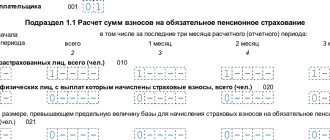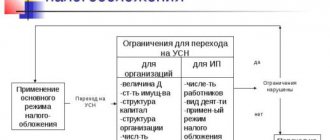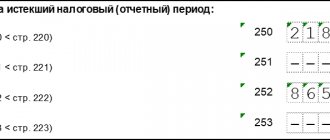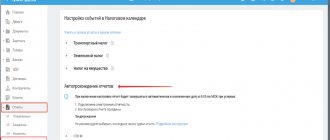At the end of each quarter, all employers must submit a report to the Social Insurance Fund in Form 4-FSS. It reflects information on insurance premiums accrued and paid for employees to the Social Insurance Fund in the reporting quarter.
note
, in 2022, in the calculation of 4-FSS it is necessary to reflect only information on injuries and occupational diseases (this is due to the transfer of insurance premiums under the control of the Federal Tax Service and the introduction of new reporting).
Entrust reporting to specialists
Deadlines for submitting form 4-FSS in 2022
In 2022, the deadline for submitting reports to the Social Insurance Fund depends on its form:
- on paper - no later than 20th
day of the first month of the next quarter; - in electronic form – no later than the 25th
day of the first month of the next quarter.
Note
: If the due date falls on a weekend or holiday, the deadline for submitting the report is moved to the next business day.
Deadlines for submitting a report on Form 4-FSS in 2022
| Reporting period | Paper form | Electronic form |
| 2021 | January 20, 2022 | January 25, 2022 |
| 1st quarter 2022 | April 20, 2022 | April 26, 2022 |
| Half year 2022 | July 20, 2022 | July 26, 2022 |
| 9 months of 2022 | October 20, 2022 | October 25, 2022 |
| 2022 | January 20, 2023 | January 25, 2023 |
Entrust reporting to specialists
Determining the basis for calculating insurance premiums
Table 1 shows the value of the insurance base for the last three months of the reporting period, as well as the base formed since the beginning of the reporting year.
The base includes all accruals made under employment, civil law contracts or copyright contracts, if their subject is the performance of work, provision of services and they provide for the payment of contributions to the tax and labor costs.
The cost of remuneration received by the insured person in kind is recalculated into rubles on the day of receipt in accordance with the terms of the concluded contract, and with state regulation of prices for these goods - at state retail prices, including VAT and excise taxes (Article 20.1 of Law 125- Federal Law).
The table below shows the amounts that are not subject to insurance premiums. A complete list of these payments is specified in Art. 20.2 of Law 125-FZ.
A separate line is allocated for amounts accrued in favor of employees with disabilities.
At the bottom of the table, the tariff corresponding to the pro-free discount class is written, with the surcharges and discounts established for it.
Fines for failure to submit a report to the Social Insurance Fund
The following penalties are established for late submission of the report:
- if the payment was submitted with a delay not exceeding 180 calendar days, the fine will be 5%
of the amount of contributions for each full and partial month of delay, but not more than
30%
and not less than
100
rubles. - if the delay exceeded 180 calendar days, the fine will be 30%
of the amount of contributions, and starting from the 181st day, the fine will additionally increase by
10%
for each month of delay. In such a situation, the size of the maximum fine is not limited, and the minimum is 1,000 rubles.
Besides
300
to
500
from officials of the organization (Article 15.33 of the Code of Administrative Offenses of the Russian Federation).
Data on the results of a special assessment of working conditions and medical examinations
In Table 5, policyholders reflect information on special assessments of working conditions and workplace certifications (SOUT) carried out before the start of the reporting year. All data is reflected in it in accordance with Art. 27 of the Law “On Special Assessment of Labor” dated December 28, 2013 No. 426-FZ.
The 1st line of the table reflects the quantity:
- jobs for the insurer at the beginning of the year,
- workplaces where a special assessment of working conditions was carried out, including those whose working conditions were recognized as harmful and dangerous.
Line 2 shows the number of workers who work in harmful and dangerous conditions and are subject to mandatory preliminary and routine medical examinations, as well as the number of workers who have undergone medical examinations at the beginning of the current year.
Methods for filing 4-FSS in 2022
A report on Form 4-FSS can be submitted in two ways:
Method 1. In paper form with a report file attached
To do this, you need to print the report in 2 copies, send its electronic version to a flash drive (a digital signature is not required in this case) and take it to the Social Insurance Fund office.
Fund employees will transfer the data to them and give you a second copy of the report with a note indicating its receipt.
note
, you can submit a report in this way only if the average number of employees does not exceed 25 people.
Method 2. In electronic form with digital signature
Individual entrepreneurs and organizations with an average number of employees exceeding 25 people
, are required to submit reports to the Social Insurance Fund in electronic form with an electronic digital signature (EDS).
To obtain an electronic digital signature, you must conclude an agreement with one of the electronic document operators and notify your FSS department about this. After this, you will be able to send reports in Form 4-FSS via the Internet.
The process of using these services is usually quite simple and intuitive; in any case, you can always seek advice from a specialist from this company.
When sending a report via the Internet, the FSS sends a receipt in response by letter confirming the delivery of information (it serves as confirmation that you submitted the report). After checking the report, you will receive a control protocol with its results.
Do I need to submit zero reporting?
Form 4-FSS is a report of individual entrepreneurs and organizations that pay contributions for injuries for employees working under an employment or civil contract. In addition, it is rented out by individuals if they hire assistants under an employment contract: personal cooks, maids, nannies, drivers, etc.
This is one of the few reports that can be submitted on paper to certain categories of employers - those with less than 25 employees. All others must submit 4-FSS electronically.
The report is needed in order to calculate insurance premiums for occupational diseases and work-related injuries for insured employees. The form also contains information about flat rate premiums.
If no activity was carried out during the reporting period, salaries were not accrued and contributions were not paid, you still need to submit a zero report. The form must have a title page filled in; in tables 1, 2, 5 dashes must be added. Along with the report, you must provide a written explanation that the company did not work, and therefore there were no wages and insurance contributions.
Basic rules for filling out form 4-FSS
- At the top of each page the “Insured Registration Number” and “Subordination Code” are indicated in accordance with the notification issued upon registration with the Social Insurance Fund.
- The title page and tables 1, 2, 5 are mandatory
, so they must be completed by all employers (even in the absence of activity). - Only one indicator is entered in each line. If any indicators are missing, a dash is added. If there is no data for tables 1.1, 3, 4, then they are not filled out and are not submitted to the Social Insurance Fund.
- In the 4-FSS report, it is not allowed to correct errors using a correction tool.
- At the end of each page there is a signature and the date the report was signed.
- The stamp is placed only on the title page, where the M.P. is indicated. (place of printing).
Tables 3 and 4
Table No. 3 is optional and must be filled out only if during the reporting period you spent Social Security funds on:
- payment of benefits for accidents and injuries;
- payment for treatment of workers in hazardous industries in sanatoriums;
- financing of preventive measures to reduce injuries and occupational diseases at work.
Table No. 4 reflects information about cases of injuries and occupational diseases that occurred during the reporting period. If no incidents were recorded, this table also does not need to be filled out.
Instructions for filling out the 4-FSS calculation
You can download the official instructions for filling out the 4-FSS calculation from this link.
Title page
In the field “ Adjustment number”
" is put: "
000
" (if the declaration is submitted for the first time for the tax period (quarter), "
001
" (if this is the first correction), "
002
" (if the second), etc.
Note
: the updated calculation is submitted in the form that was in force in the period for which errors were identified.
In the field “ Reporting period (code)
» the code of the period for which the report is submitted is indicated:
- I quarter – 03;
- Half-year – 06;
- 9 months – 09;
- Calendar year – 12.
The number of requests from the policyholder for the allocation of the necessary funds to pay insurance compensation is designated 01, 02, and so on.
In the “ Calendar year”
» indicates the year for the reporting period for which the Calculation is submitted (updated Calculation).
Field “ Discontinuation of activity”
» is filled out only in case of termination of activity due to the liquidation of an organization or closure of an individual entrepreneur.
In this case, the letter “ L
” is placed.
Further
The full name of the organization is indicated in accordance with the constituent documents. Individual entrepreneurs fill out the last name, first name, patronymic (in full, without abbreviations, in accordance with the identity document).
In the " TIN"
» Individual entrepreneurs and organizations indicate the TIN in accordance with the received certificate of registration with the tax authority. For organizations, the TIN consists of 10 digits, so when filling it out, you must put zeros in the first 2 cells (for example, “001234567891”).
Field " Checkpoint"
» IP is not filled out. Organizations indicate the checkpoint that was received from the Federal Tax Service at the location of the organization (separate unit).
Field “ OGRN (OGRNIP)
" Individual entrepreneurs and organizations indicate their OGRN (OGRNIP) in accordance with the received state registration certificate. For organizations, the OGRN consists of 13 digits, so when filling in the first 2 cells you must put zeros (for example, “001234567891234”).
Field " OKVED code"
" Individual entrepreneurs and organizations indicate the code according to the All-Russian Classifier of Types of Economic Activities OK 029-2014 (NACE Rev. 2). Newly created organizations - insurers for compulsory social insurance against industrial accidents and occupational diseases indicate a code according to the state registration authority, and starting from the second year of activity - a code confirmed in the prescribed manner in the territorial bodies of the Fund.
In the “ Contact phone number”
» indicate the landline or mobile phone number with the city code or mobile operator. You cannot use the dash and parenthesis signs (for example, “+74950001122”).
In the fields separated to indicate the registration address
:
- Organizations indicate a legal address.
- Individual entrepreneurs indicate the registration address at the place of residence.
In the field “ Average number of employees
»:
- Organizations indicate the average number of employees.
- Individual entrepreneurs indicate the number of insured individuals to whom payments were made as part of their employment relationship.
In other cells
it is necessary to indicate the number of disabled people working and employed in work with harmful and (or) hazardous production factors.
In the field “ Calculation is presented on
"indicates the number of pages that make up the 4-FSS report (for example, “006”). If copies of documents are attached to the report (for example, a representative’s power of attorney), then their number is indicated (if they are missing, put dashes).
Block “ Reliability and completeness of information”
»:
In the first field you must indicate the person's code
, confirming the accuracy and completeness of the information in the calculation: “
1
” (policyholder), “
2
” (representative of the policyholder) or “
3
” (successor).
Further, depending on who confirms the information, the surname, name, and patronymic of the head of the organization, individual entrepreneur, representative or legal successor are indicated (in full, without abbreviations, in accordance with the identity document).
In the “Signature” and “Date” fields, enter the signature of the payer (successor) or his representative and the date of signing the Calculation (if there is a seal, it is placed in the MP field).
If the declaration is submitted by a representative, then it is necessary to indicate the type of document confirming his authority. If the representative of a legal entity is an organization, then its name must be indicated in the appropriate field.
General requirements
An insured who has independent classification units, allocated in accordance with the order of the Ministry of Health and Social Development of the Russian Federation dated January 31, 2006, submits a Calculation compiled for the organization as a whole, and Section II of the Calculation for each division of the policyholder, which is an independent classification unit.
Table 1. “Calculation of the base for calculating insurance premiums”
Section “Calculation of accrued and paid insurance contributions for compulsory social insurance against industrial accidents and occupational diseases”
By line 1
payments in favor of employees are reflected on an accrual basis, respectively, for the first quarter, half a year, 9 months of the current period and the year, including for the last three months of the reporting period (line 2) broken down by month (lines 3 - 5).
By line 2
the corresponding columns reflect amounts not subject to insurance premiums in accordance with Article 20.2 of the Federal Law of July 24, 1998 N 125-FZ
On line 3
The base for calculating insurance premiums is reflected, which is defined as the difference in line indicators (line 1 - line 2).
On line 4
the corresponding columns reflect the amount of payments in favor of working disabled people.
On line 5
reflects the size of the insurance tariff, which is set depending on the class of professional risk to which the insured belongs (separate division).
On line 6
the percentage of discount to the insurance rate established by the territorial body of the Social Insurance Fund for the current calendar year is indicated in accordance with the Rules for establishing discounts and surcharges for policyholders to insurance rates for compulsory social insurance against industrial accidents and occupational diseases, approved by the Decree of the Government of the Russian Federation of May 30, 2012 No. 524 “On approval of the Rules for establishing discounts and surcharges for insurers on insurance rates for compulsory social insurance against industrial accidents and occupational diseases.”
On line 7
the percentage of the premium to the insurance tariff established by the territorial body of the Social Insurance Fund for the current calendar year is entered in accordance with Decree of the Government of the Russian Federation of May 30, 2012 N 524.
On line 8
the date of the order of the territorial body of the Social Insurance Fund to establish an additional premium to the insurance tariff for the policyholder (separate unit) is indicated.
On line 9
the amount of the insurance rate is indicated taking into account the established discount or surcharge to the insurance rate. The data is filled in with two decimal places after the decimal point.
Table 1.1. “Information necessary for calculating insurance premiums by policyholders specified in paragraph 2.1 of Article 22 of the Federal Law of July 24, 1998 N 125-FZ”"
The table is filled out by insurers who temporarily send their employees under an agreement on the provision of labor for workers (personnel) in the cases and under the conditions established by the Labor Code of the Russian Federation.
The number of completed lines in the table must correspond to the number of legal entities or individual entrepreneurs to which the insurer temporarily sent its employees under an agreement on the provision of labor for employees (personnel) in cases and under the conditions established by labor legislation.
In columns 2, 3, 4
the registration number in the Social Insurance Fund, INN and OKVED of the receiving legal entity or individual entrepreneur is indicated.
In column 5
the total number of employees temporarily assigned under a contract to work for a specific legal entity or individual entrepreneur is indicated.
In column 6
payments in favor of employees temporarily assigned under a contract, from whom insurance premiums are charged, are reflected on an accrual basis, respectively, for the 1st quarter, half-year, 9 months of the current period and the year.
In column 7
payments in favor of working disabled people temporarily assigned under a contract, from whom insurance premiums are calculated, are reflected on an accrual basis, respectively, for the 1st quarter, half-year, 9 months of the current period and the year.
In columns 8, 10, 12
payments in favor of employees temporarily assigned under a contract, from whom insurance premiums are calculated, are reflected on a monthly basis.
In columns 9, 11, 13
payments in favor of working disabled people temporarily assigned under a contract, from whom insurance premiums are calculated, on a monthly basis.
In column 14
the amount of the insurance tariff is indicated, which is set depending on the class of professional risk to which the receiving legal entity or individual entrepreneur belongs.
In column 15
the size of the insurance tariff of the receiving legal entity or individual entrepreneur is indicated, taking into account the established discount or surcharge to the insurance tariff. The data is filled in with two decimal places after the decimal point.
Table 2. “Calculations for compulsory social insurance against accidents at work and occupational diseases”
The table is filled out based on the policyholder's accounting records.
By line 1
reflects the amount of debt for insurance premiums from industrial accidents and occupational diseases that the payer of insurance premiums (the policyholder) has at the beginning of the billing period. This indicator should be equal to the indicator of line 19 for the previous billing period, which does not change during the billing period
By line 2
the amount of accrued insurance contributions for compulsory social insurance against industrial accidents and occupational diseases from the beginning of the billing period is reflected in accordance with the amount of the established insurance tariff, taking into account the discount (surcharge). The amount is divided “at the beginning of the reporting period” and “for the last three months of the reporting period.”
On line 3
the amount of contributions accrued by the territorial body of the Social Insurance Fund based on on-site inspection reports is reflected.
On line 4
the amounts of expenses not accepted for offset by the territorial body of the Social Insurance Fund for previous billing periods are reflected according to acts of on-site and desk inspections.
On line 5
reflects the amount of insurance premiums accrued for previous billing periods by the policyholder, subject to payment to the territorial body of the Social Insurance Fund.
On line 6
the amounts received from the territorial body of the Fund are reflected in the bank account of the payer of insurance premiums (the policyholder) in order to reimburse expenses exceeding the amount of accrued insurance premiums.
On line 7
reflects the amounts transferred by the territorial body of the Fund to the bank account of the policyholder as a return of overpaid (collected) amounts of insurance premiums, offset of the amount of overpaid (collected) insurance premiums towards the repayment of debt on penalties and fines subject to collection.
Line 8
– control line, where the sum of the values of lines 1 to 7 is indicated.
On line 9
shows the amount of debt at the end of the reporting (calculation) period based on the accounting data of the payer of insurance premiums (policyholder):
- line 10
reflects the amount of debt owed to the territorial body of the Fund at the end of the reporting (calculation) period, formed due to the excess of expenses incurred for compulsory social insurance against industrial accidents and occupational diseases over the amount of insurance premiums subject to transfer to the territorial body of the Fund. - line 11
reflects the amount of debt owed to the territorial body of the Fund, formed due to the amounts of insurance premiums overpaid by the payer of insurance premiums (the policyholder) at the end of the reporting period.
On line 12
shows the amount of debt at the beginning of the billing period:
- line 13
reflects the amount of debt owed to the territorial body of the Fund at the beginning of the billing period, formed due to the excess of expenses for compulsory social insurance against industrial accidents and occupational diseases over the amount of insurance contributions subject to transfer to the territorial body of the Fund, which during the billing period did not changes (based on accounting data of the payer of insurance premiums (policyholder)); - line 14
reflects the amount of debt owed to the territorial body of the Fund, formed due to the amounts of insurance premiums overpaid by the payer of insurance premiums (the policyholder) at the beginning of the billing period.
The indicator of line 12 must be equal to the indicator of lines 9 of the Calculation for the previous billing period.
On line 15
expenses for compulsory social insurance against industrial accidents and occupational diseases are reflected on an accrual basis from the beginning of the year, broken down “at the beginning of the reporting period” and “for the last three months of the reporting period.”
On line 16
the amounts of transferred insurance premiums by the payer of insurance premiums (the policyholder) are reflected in the personal account of the territorial body of the Fund, opened with the Federal Treasury, indicating the date and number of the payment order.
On line 17
the written-off amount of the insured's debt is reflected in accordance with the regulatory legal acts of the Russian Federation adopted in relation to specific insurers or the industry, on the write-off of arrears, as well as in the event that the court adopts an act, according to which the insurer loses the ability to collect arrears and debt on penalties in connection with the expiration of the established period for their collection, including the issuance of a ruling on the refusal to restore the missed deadline for filing an application to the court for the collection of arrears and arrears of penalties.
Line 18
– control line, which shows the sum of the values of lines 12, 15 – 17.
On line 19
the debt owed by the payer of insurance premiums (policyholder) is reflected at the end of the reporting (settlement) period based on the accounting data of the payer of insurance premiums (policyholder), including arrears (line 20).
Table 3. “Expenses for compulsory social insurance against accidents at work and occupational diseases”
By lines 1, 4, 7
expenses incurred by the payer of insurance premiums (the policyholder) are reflected in accordance with the current regulatory legal acts on compulsory social insurance against industrial accidents and occupational diseases, of which:
- on lines 2, 5
– expenses incurred by the insured to the injured person working outside; - on lines 3, 6, 8
- expenses incurred by the insured who suffered in another organization; - Line 9
reflects expenses incurred by the insurer to finance preventive measures to reduce industrial injuries and occupational diseases. These expenses are made in accordance with the Rules for financial support of preventive measures to reduce industrial injuries and occupational diseases of workers and sanatorium and resort treatment of workers engaged in work with harmful and (or) dangerous production factors, approved by order of the Ministry of Labor and Social Protection of the Russian Federation dated 10 December 2012 N 580n.
Line 10 – control line
, where the sum of the values of lines 1, 4, 7, 9 is shown.
On line 11
The amount of accrued and unpaid benefits is reflected for reference, with the exception of the amounts of benefits accrued for the last month of the reporting period, in respect of which the deadline for payment of benefits established by the legislation of the Russian Federation has not been missed.
In column 3
the number of paid days for temporary disability due to an accident at work or occupational disease (vacation for sanatorium treatment) is shown.
In column 4
expenses are reflected on an accrual basis from the beginning of the year, offset against insurance contributions for compulsory social insurance against industrial accidents and occupational diseases.
Table 4. “Number of victims (insured) in connection with insured events in the reporting period”
By line 1
the data is filled out on the basis of reports of industrial accidents in form N-1 (Appendix No. 1 to the resolution of the Ministry of Labor and Social Development of the Russian Federation of October 24, 2002 No. 73, highlighting the number of fatal cases (line 2).
On line 3
the data is filled in on the basis of reports on cases of occupational diseases (appendix to the Regulations on the investigation and recording of occupational diseases, approved by Decree of the Government of the Russian Federation of December 15, 2000 N 967).
On line 4
the sum of the values of lines 1, 3 is reflected, highlighting on line 5 the number of victims (insured) in cases that resulted only in temporary disability. The data on line 5 is filled in on the basis of certificates of incapacity for work.
When filling out lines 1-3
, which are filled out on the basis of reports on industrial accidents in form N-1 and reports on cases of occupational diseases, insured events for the reporting period should be taken into account on the date of the examination to verify the occurrence of the insured event.
Table 5. “Information on the results of a special assessment of working conditions and mandatory preliminary and periodic medical examinations of workers at the beginning of the year”
On line 1 in column 3
data on the total number of employer's jobs subject to a special assessment of working conditions is indicated, regardless of whether a special assessment of working conditions was carried out or not.
On line 1 in columns 4-6
data on the number of jobs in respect of which a special assessment of working conditions was carried out, including those classified as harmful and dangerous working conditions, contained in the report on the special assessment of working conditions is indicated; if a special assessment of working conditions was not carried out by the insurer, then “0” is entered in columns 4 – 6
If the validity period of the results of certification of workplaces for working conditions, carried out in accordance with the procedure in force before the date of entry into force of the Federal Law of December 28, 2013 N 426-FZ “On Special Assessment of Working Conditions”, has not expired, then line 1 in columns 3 – 6 in accordance with Article 27 of the Federal Law of December 28, 2013 N 426-FZ, information based on this certification is indicated.
On line 2 in columns 7 – 8
data is indicated on the number of workers engaged in work with harmful and (or) hazardous production factors who are subject to and have passed mandatory preliminary and periodic inspections.
Columns 7 – 8
are filled out in accordance with the information contained in the final acts of the medical commission based on the results of periodic medical examinations (examinations) of workers (clause 42 of the Procedure for conducting mandatory preliminary (upon entry to work) and periodic medical examinations of workers engaged in heavy work and work with hazardous and (or) hazardous working conditions, approved by order of the Ministry of Health and Social Development of the Russian Federation dated April 12, 2011 N 302n and in accordance with the information contained in the conclusions based on the results of a preliminary medical examination issued to employees who have undergone these examinations in the previous year.
In column 7
indicates the total number of employees engaged in work with harmful and (or) hazardous production factors, subject to mandatory preliminary and periodic inspections.
In column 8
the number of employees engaged in work with harmful and (or) hazardous production factors who have undergone mandatory preliminary and periodic inspections is indicated.
In this case, the results of mandatory preliminary and periodic medical examinations of workers as of the beginning of the year should be taken into account, taking into account that, according to paragraph 15 of the Procedure, the frequency of periodic medical examinations is determined by the types of harmful and (or) hazardous production factors affecting the employee, or the types of work performed .
Filling out the title page
The title page contains basic information about the policyholder submitting the report:
- Registration number of the policyholder.
A 10-digit number assigned to the employer by the Social Insurance Fund upon registration.
- Subordination code.
Code designation of the territorial Social Insurance Fund where the employer is registered. It consists of 5 characters and can also be found in the registration notice.
- Correction number.
If the report is submitted for the first time for the reporting period, you need to indicate the value “000”; if an adjustment is submitted, then its number should be indicated: “001”, “002”, etc.
- Reporting period.
When submitting a report for the first quarter, half a year, nine months and a year, only the first two cells of the field are filled in. When submitting the 4-FSS for the year, the value “12” is indicated, when submitting the report for the 1st half of the year - “03”, for the half-year - “06”, for 9 months - “09”. The second two cells are filled in only when applying for funds to pay insurance coverage.
- Calendar year.
The year in which the policyholder reports is indicated. When submitting 4-FSS for 2022, indicate the value “2019”.
- Termination of activities.
To be completed only when submitting a report in the event of liquidation of an organization or closure of an individual entrepreneur. In this case, you need to indicate the value “L” in it.
- Full name.
The name of the organization is indicated in accordance with the constituent documents. Individual entrepreneurs, notaries, lawyers, heads of peasant farms and persons who are not individual entrepreneurs indicate their full names, without abbreviations.
- INN/OGRN.
Organizations indicate zeros in the first two cells, and enter the TIN and OGRN numbers in the rest. Individual entrepreneurs who have a 12-digit TIN enter it in full, without zeros. Only companies fill out the checkpoint.
- OKVED.
The code of the main type of activity is indicated, according to the OK 029-2014 classifier (NACE Rev. 2). Using the main code, the FSS will assign the policyholder a pro-free insurance class and set the rate of “unfortunate” contributions for 2022. To do this, no later than April 15, 2020, submit an application confirming the main type of activity to the territorial branch of the Social Insurance Fund. If you do not submit it, the Fund will establish the maximum profrisk class from those specified by you during registration and contained in the Unified State Register of Legal Entities (USRIP) OKVED. Let us remind you that the maximum tariff is 8.5%. Minimum - 0.2%.
- Registration address.
The insured's address is indicated: legal - if the report is submitted by an organization, and the place of permanent registration, if the individual entrepreneur is reporting.
- Fields about the number of employees.
Filled out in accordance with calculations in accordance with Rosstat requirements.
- Reliability and completeness of information...
When submitting the calculation personally, the policyholder indicates code “1”, and his representative indicates code “2”. Next in the “Full name” field organizations enter the full name of the leader, individual entrepreneurs, individuals, representatives-individuals indicate the name, representatives-legal entities - the name of the organization.
At the very bottom of the page, the policyholder (his representative) puts his signature and the date of signing the calculation.









